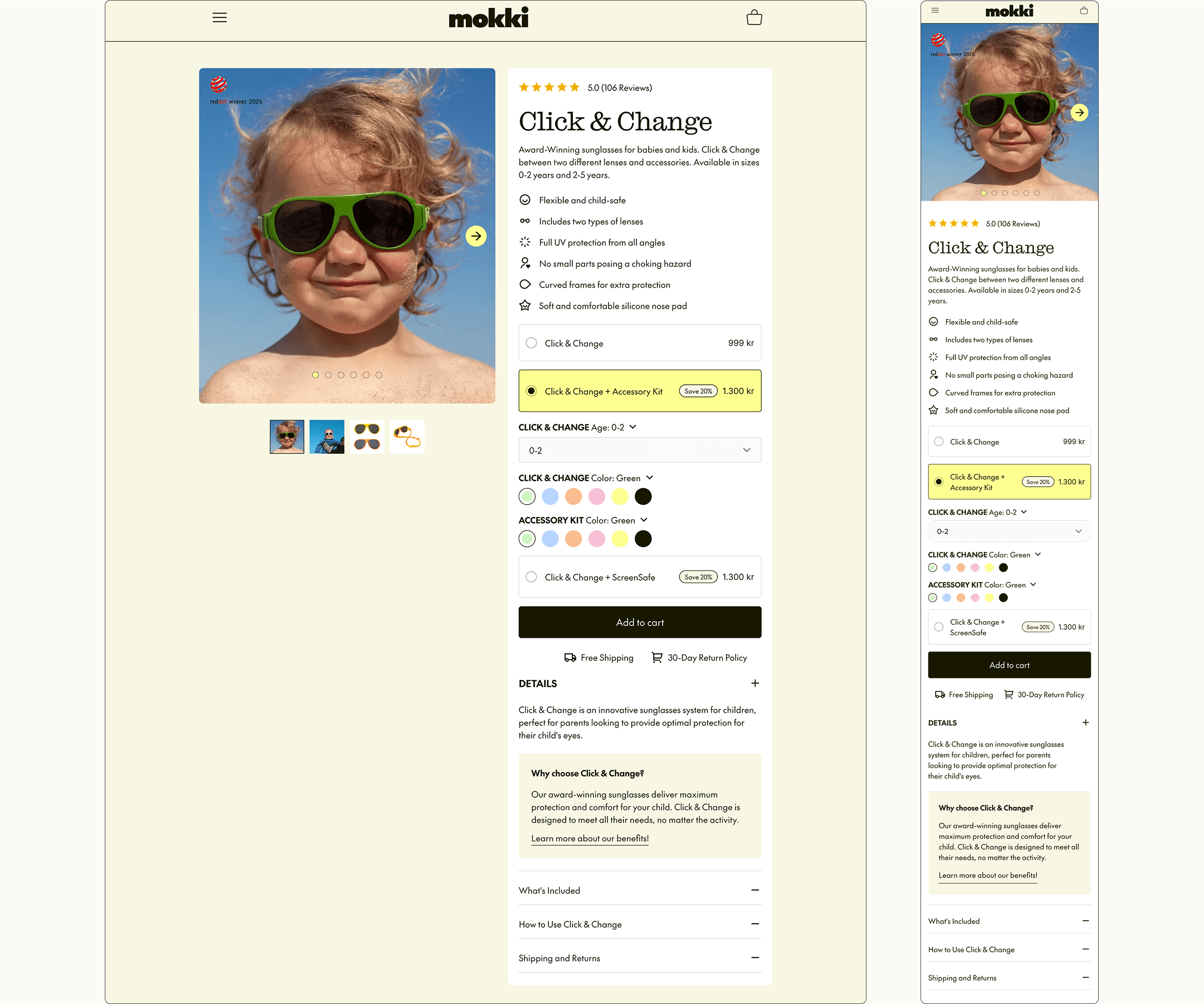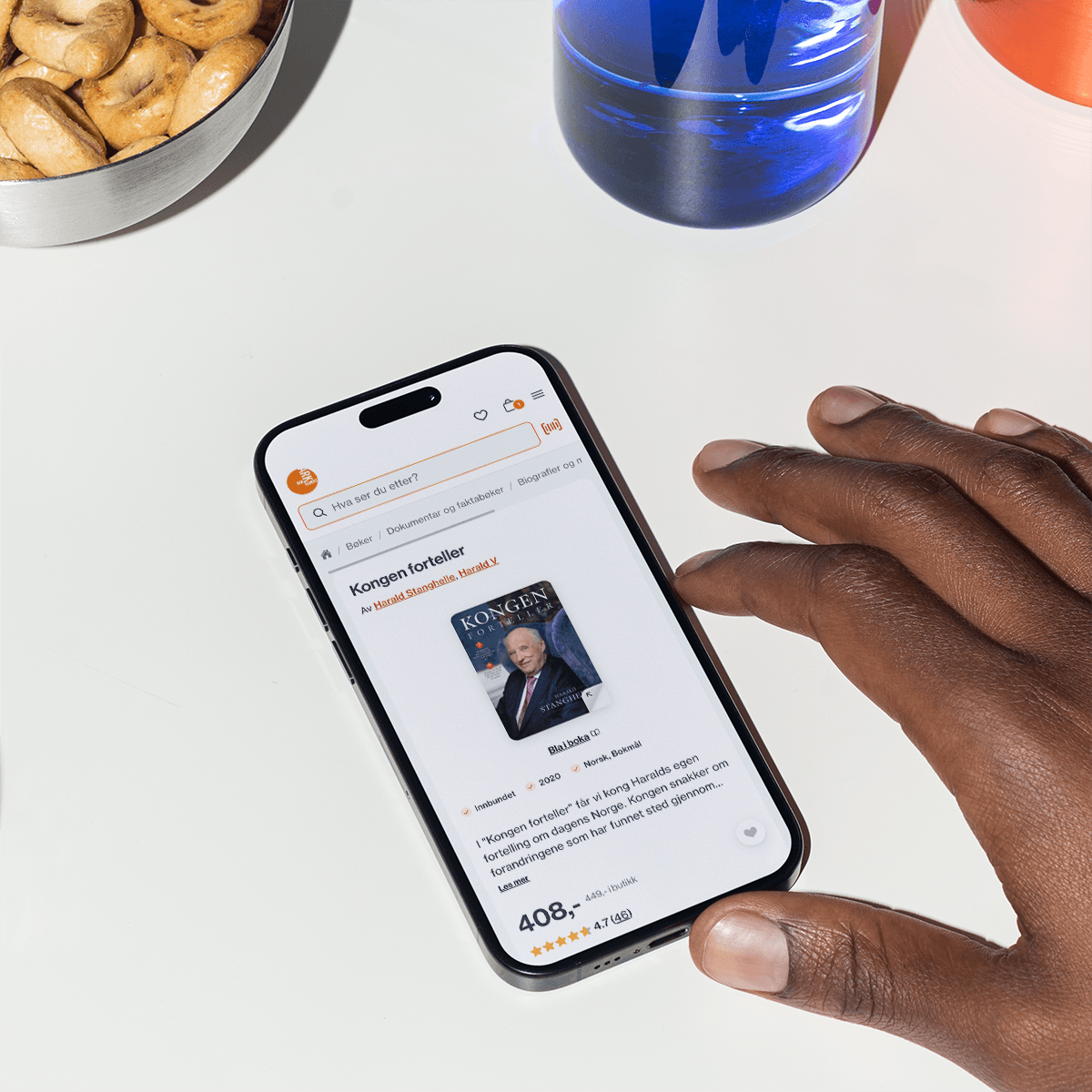Let me ask you something blunt—when’s the last time you really knew who was clicking “Buy Now” in your shop? Not “shopper #2845,” but the actual person. You know, the one juggling groceries, two kids, and a phone with 3% battery left. If you’re like most eCommerce folks I talk to, user persona talk probably slips to the bottom of the to-do list… right between cleaning up those abandoned carts and finally fixing your mobile checkout. But what if the whole game changed when you get specific—painfully, hilariously, humanly specific—about the people who actually land on your site?
Here’s the deal: generic “target audience” ideas just don’t cut it anymore. Competition’s skyrocketed, and shoppers aren’t just picky—they’re jumping ship after one lousy experience. I’ve seen it firsthand with Blikket clients who dialed into real user personas and suddenly watched conversions jump, sometimes by double digits. We’re talking tweaks so simple, your dev team might roll their eyes at first—until the revenue charts start moving.
So, if you’ve found yourself staring at analytics charts, muttering about bounce rates, or wondering why those big CRO campaigns fizzle, you might be missing that one thing the top shops know: deep, actionable empathy for your actual user. Want to see how they do it? Grab a coffee, and let’s get real about making user persona work your not-so-secret CRO weapon.
Introduction to User Personas in eCommerce
Let’s get right to the point: if you want to actually connect with your customers, you can’t treat everyone like they shop the same way. This is where the concept of a User Persona comes in. In eCommerce, a User Persona is basically a detailed, semi-fictional profile of your ideal customer, shaped by customer data, real behaviors, and sometimes those little quirks people reveal in reviews or surveys. Think of them as your go-to character when you’re trying to answer, “Would my customer actually care about this new feature or deal?”

Here’s why this matters: with a clear User Persona or two, you and your team stop guessing at what shoppers want. You stop designing your homepage or ad campaigns based on a hunch, and start asking, “Is this right for Sarah, our budget-conscious mom looking for fast shipping?” or “Would Jayden the sneakerhead care about this payment option?” This makes the whole process less about throwing spaghetti at the wall and more about actually getting your message through to real humans. If you want to see how deep this rabbit hole can go, check out this great intro to personas.
Now, let’s talk about something that keeps almost every eCommerce owner up at night: turning visitors into buyers. This is where Conversion Rate Optimization (CRO) steps in. CRO is just a fancy way of saying you want to increase the percentage of people who actually do the thing you want, buy, sign up, click, or maybe just move from cart to checkout. With so many businesses fighting for the same clicks, you can’t afford to waste traffic. If shoppers hit your site and never buy, it’s like pouring water into a leaky bucket.
What’s wild is how User Personas can transform your CRO game. Instead of making generic changes (“let’s try a red button instead of blue!”), You start making decisions that hit home for your key audiences. When you customize product pages or checkout flows around what your top personas care about, you see less drop-off and more completed checkouts. Suddenly, your tweaks aren’t just random; they’re direct responses to real motivations and pain points. You’ll notice things getting a lot easier when your site, emails, and offers feel like they were made for the exact people who are actually shopping with you.
So, if you’re serious about punching up your conversion rates, building and acting on User Personas isn’t just a nice-to-have. It’s one of the best ways to make your CRO dollars (and hours) count.
Ready for the magic? Keep those User Personas front and center, and let’s see what happens when you stop marketing to the crowd and start talking to the individual. Your site and your results will look a whole lot different.
The Role of User Personas in Enhancing UX
If you really want to move the needle on User Experience, start with a rock-solid User Persona. I promise, this isn’t just “UX 101” stuff. When you have a detailed, living profile of your main customer types, you end up designing every touchpoint, homepages, product filters, and cart flows based on what real shoppers care about. Suddenly, your site feels like it was made just for them. You’re not just guessing at what your audience wants; you’re acting on actual motivations, habits, and pain points.
Let’s talk specifics. If your User Persona is a busy mom who reads product reviews on her phone while waiting in the school pickup line, your mobile UI had better be sleek, fast, and review-forward. Or maybe you’ve got a data-driven detail lover who pores over specs before buying a high-ticket gadget. For them, you’ll want a clear comparison tool and transparent return info. These details might seem tiny, but for the actual customer, they’re game changers.
It comes down to empathy. When you know your personas, you spot friction points before they cost you a sale. Ever see a checkout page with five steps too many? That’s a nightmare for almost any persona. But some users want a guest checkout, others care about loyalty rewards, and a few might need Apple Pay or Klarna for that final nudge. By mapping out journeys for each persona, your team bakes helpful micro-experiences into the flow. That removes doubt, boosts convenience, and gives people a reason to finish buying, not bail when things get complicated.
Now, here’s where things get interesting. Improving the experience for your core personas almost always leads to higher conversion rates. There’s a direct line: happy, understood shoppers stick around longer, click more, and hit that “place order” button far more often. I’ve seen brands go from average numbers to “wait, is this real?” conversion spikes just by focusing on this process. Good UX is never generic. It’s about feeling personal, like your site was tailor-made for whoever landed on it. The person who feels understood is way less likely to abandon their cart at the last second.
And this isn’t just one person’s opinion. You’ll find plenty of examples out in the wild where persona-driven UX leads to actual business growth. Think of every “aha” moment when you test a new feature and realize it matches what your persona actually needs, not just what they said they wanted. You cut out dead weight, add what matters, and see more sales as a result.
At Blikket, we live for this stuff. We build every eCommerce experience around real customer journeys, never just ‘industry standards’. If you walk through some of the brands we’ve worked with, you’ll see a pattern: keep the User Persona front and center, then iterate until every interaction feels custom-fit. It’s not magic, just practical empathy paired with solid design. When you get this right, you see it in happier customers and those steadily climbing conversion rates.
Creating Effective User Personas
Building an effective User Persona isn’t just about making a pretty profile and slapping a name on it. The secret? You’ve got to root everything in actual data. If you skip this, you’re basically playing eCommerce make-believe, and that never led anyone to a spike in revenue or a homepage that truly connects.

Step 1: Get Curious, Gather Real Data
First, you want to go beyond your gut. You need qualitative and quantitative research. This means:
- Launching surveys right on your site. Ask visitors what brought them there, what almost stopped them from buying, or what convinced them to hit that “complete purchase” button.
- Running in-depth interviews. Get a handful of loyal customers on a call and ask about their real lives, not just what they bought, but how they shop, what’s frustrating, and what gets them pumped to click “add to cart.”
- Diving into your analytics. Look at your top navigation paths, abandoned cart flows, and even which support articles get the most hits. Sometimes the squeaky wheel is telling you what blocks conversion.
- Watching on-site behavior. Heatmaps, session recordings, and form analytics can reveal where users are dropping off, what they click, and what they avoid like the plague.
You want to look for patterns in motivation, hesitations, goals, and channel preferences, pull in stuff from your CRM, previous campaigns, and even competitor analysis. Your sales team is another goldmine. They hear real objections and questions every day, so loop them in on what real customers actually care about in your personas.
Step 2: Spot the Themes, Analyze and Segment
Now, you sift through the chaos. Cluster users by goals, background, and barriers, not just basic demographics. Maybe you notice a big chunk of shoppers ditch their cart at the shipping selection, or another group always asks about eco-friendly materials. Start grouping users by these key behaviors and concerns. Don’t overcomplicate it out of the gate; one or two strong User Personas can move mountains in eCommerce if they’re accurate.
If you want, use a simple spreadsheet and organize:
- Demographics (age, location, devices used)
- Main goals (quick deals, gift shopping, detailed product info, etc.)
- Biggest pain points or conversion blockers
Patterns jump out when you’re staring at enough real-life feedback. If you’re lucky, you’ll see some “aha” moments, like frequent visitors who love browsing but panic at high shipping costs, or first-timers who need extra hand-holding through the product comparison stage to make informed decisions.
Step 3: Build Out the Persona, Make It Relatable and Actionable
Here’s where it’s tempting to slip into creative writing mode. Don’t just invent a character. Use the data to flesh out a believable profile: give your persona a name, a photo, and a backstory rooted in what you’ve discovered. You’ll want each User Persona to be simple, memorable, and representative of a real audience segment. Include what motivates them, what holds them back, their media habits, and shopping triggers. Will “Budget-Conscious Brenda” ever pay for expedited shipping? Does “Last-Minute Lucas” bounce if checkout isn’t ridiculously fast?
Remember, demographics alone won’t cut it. The best personas include a day-in-the-life perspective, actual quotes from user feedback, and a hefty dose of real-world shopping pain points. This is what sets a data-driven persona apart from a half-baked “marketing target.”
Step 4: Put Personas Into Action (or They’re Just Fancy Posters)
This is where a lot of marketers drop the ball. Creating awesome personas means nothing if you don’t bake them into your daily game plan. Get your whole team using these User Personas for:
- Ad targeting and content strategy, tweak messaging so it actually matters to your personas, not just clicks on a generic ad
- Product page designs, surface info, or features that matter most to each core persona (think reviews for the research-obsessed, or easy payment for checkout-phobes!)
- UX tweaks, remove blockers highlighted in persona pain points, even if it’s a small thing like clarifying a size chart
- Testing ideas, stop guessing what matters in A/B tests, use your User Persona’s voice to set up truly relevant hypotheses
And don’t let your personas get stale. Set a reminder every quarter or so to revisit your data. What’s changed? Where did you miss the mark?
Why Data-Driven Personas Win the Long Game
I’ve seen plenty of teams flop when they rush and base personas on hunches or anecdotes. If you work off live data, site analytics, real user interviews, CRM patterns, you’ll catch things you’d never invent, like the hidden value of a certain promo channel, or a surprise drop-off cause on mobile. Real User Personas are nimble. They’re not just helpful once; they give you a living tool to shape new campaigns and test out-of-the-box ideas for years to come in your strategies.
No matter how big your shop is, dig for the data. Even just a few hundred survey responses or interviews will get you way farther than a committee brainstorm ever could. Make your User Personas a true north, suddenly, your eCommerce site starts feeling like it was built just for your people. That’s when the magic (and the revenue) happens.
Case Studies: Success Stories from Blikket
If you want proof that building around a User Persona works, just look at the numbers. Real eCommerce brands are seeing big wins by ditching generic site experiences and tuning everything for the folks who actually hit their “Buy” button. At Blikket, we’ve seen up close how the right tweaks, rooted in what actual users care about, can change the trajectory of an entire business. Let me walk you through a couple stories where a focus on real customer motivations turned browsers into buyers and got teams genuinely excited about their results.
Mokki: Skyrocketing Sales by Understanding Real Parents
Mokki, a Norwegian kids’ eyewear brand, thought their product pages were solid. But sales were sluggish and plenty of site visitors bailed before checkout. We took a step back and asked: Who’s actually buying here? Turns out, it was parents desperately searching for gear that solved very specific pain points, think “Will this survive daycare?” and “Are the lenses good enough for my kid’s sensitive eyes?”
We built out detailed User Personas that captured these real-world worries. Then the team reworked everything from product copy to upsell offers and promotional banners. Instead of shop-wide discounts for everyone, we targeted “last-minute gift-buyers” with urgent delivery promises, and “practical parents” with a lens durability explainer right up front.
What happened when Mokki started addressing those exact needs in their language? Their conversion rates shot up by 397%. Total sales? Up 348%. That’s not a rounding error—it’s a tidal wave of actual, happy customers. And because the site felt more personal and less cookie-cutter, customer satisfaction scores climbed, too.

Ark.no: A Bookstore for Every Kind of Reader
Now think about books. Ark.no isn’t just Norway’s biggest online bookstore. Their shopper base runs the gamut—from gifters who know nothing about the latest murder mystery, to hardcore series collectors who’ll rage-quit if a pre-order is hard to find. The old homepage tried to please everyone and ended up pleasing no one.
Here’s where User Persona research changed the game. We mapped out journeys for “gift-seekers,” “avid readers,” and “students hunting for fast downloads.” The new landing pages made it ridiculously easy for a flustered dad to find a kid’s birthday bestseller, while super-fans got clear fast tracks to limited editions and reading lists.
After the redesign, Ark.no saw its conversion rate triple. Yes, triple. Even better, customers left higher feedback about how quick and stress-free shopping felt, especially those who’d previously bounced and never come back. The site didn’t just sell more; customers found what they needed and actually enjoyed shopping there.

Why These Wins Matter
Here’s the real takeaway: these aren’t isolated success stories. They’re what happens when eCommerce brands stop guessing and start building for actual people. Consistent use of User Personas helps marketers spot sticking points, test relevant offers, and bring the “voice of the customer” into daily decisions.
If you’re still sending blanket emails or running generic ads, just know your competition might be segmenting, personalizing, and watching their repeat customer numbers go up. And honestly, that is way more satisfying than seeing another cold “how did we do?” survey in your own inbox.
Want more ideas? There’s no shortage of impressive stories out there, like brands growing lists by 900%, doubling sales with nothing but smart on-site messaging, or personalizing offers so tightly that a “generic sale” looks ancient by comparison. The pattern’s always the same: listen, build out real User Personas, and let them guide your next move.
What this means for your shop right now
If you’ve made it this far, you’re probably starting to see why User Personas aren’t just an exercise for the UX team; they’re the secret ingredient that sets top eCommerce shops apart. Whether you sell hiking boots or home décor, knowing exactly who’s behind every click lets you shape an experience that actually fits real lives, not just marketing charts.
- Start with what you know, dig through your support emails, chat logs, or talk to your sales team for clues about your true customers.
- Build out those User Personas with details that matter. Think less “demographic category,” more “Jessica, overwhelmed mom with a wish list a mile long and exactly five minutes to shop.”
- Test one small site change based on what would help your main persona most, maybe clearer filters, friendlier microcopy, or a faster checkout.
- Pay attention to what moves the needle. Track your conversion rate before and after, let real data guide your next tweak.
The truth is, getting personal with your User Persona work’s the closest thing you’ll get to a CRO cheat code. You don’t need a huge budget, just a real commitment to seeing your shoppers as people, not traffic stats. So, what’s one thing you wish you knew about your best customers before they hit your site? Share your answer below, or let me know what’s worked (or flopped) when you tried getting more specific with your personas. Let’s make eCommerce better, one real person at a time.










